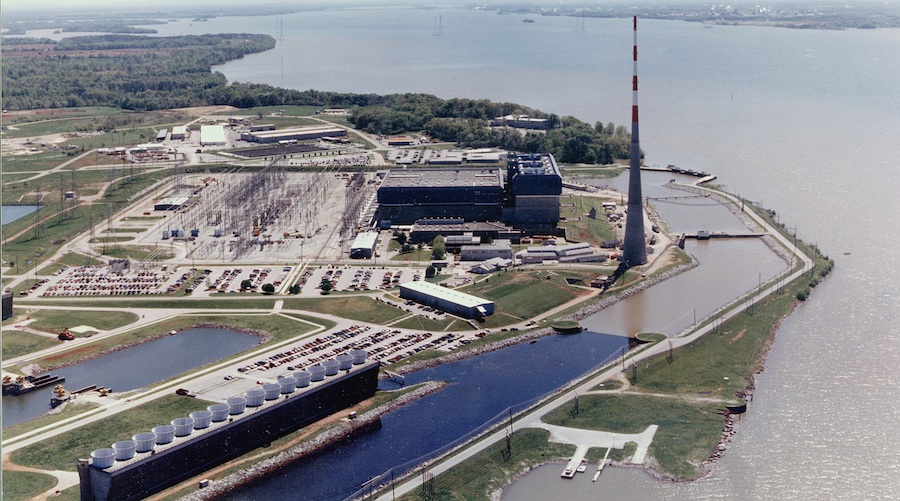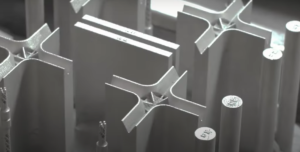MINING.COM Staff Writer | August 19, 2021 |

Browns Ferry nuclear power plant.
(Image by Nuclear Regulatory Commission, Wikimedia Commons).
The Tennessee Valley Authority’s Browns Ferry Nuclear Plant Unit 2 in Alabama has become one of the first plants in the world to use 3D-printed fuel assembly brackets.

In detail, the plant is employing four of these first-of-a-kind devices produced at the US Department of Energy’s Manufacturing Demonstration Facility at Oak Ridge National Laboratory (ORNL) in Tennessee.
To create the brackets, ORNL researchers additively manufactured channel fasteners using a micro-welding process. They took 316 metal powder – an austenitic chromium-nickel stainless steel containing deliberate amounts of molybdenum – and they put it into a system to create a three-dimensional geometry.
To characterize the brackets, they used computer tomography and ran CT scans to create a 3D representation of the material so that it was possible to look at the entire component or zoom in and explore specific critical areas. Then, the material was polished to look at the metallurgy using a combination of optical and scanning electron microscopy and transmission electron microscopy, which allowed the researchers to see the material on its atomic scale.

The Tennessee Valley Authority’s Browns Ferry Nuclear Plant Unit 2 in Alabama has become one of the first plants in the world to use 3D-printed fuel assembly brackets.

In detail, the plant is employing four of these first-of-a-kind devices produced at the US Department of Energy’s Manufacturing Demonstration Facility at Oak Ridge National Laboratory (ORNL) in Tennessee.
To create the brackets, ORNL researchers additively manufactured channel fasteners using a micro-welding process. They took 316 metal powder – an austenitic chromium-nickel stainless steel containing deliberate amounts of molybdenum – and they put it into a system to create a three-dimensional geometry.
To characterize the brackets, they used computer tomography and ran CT scans to create a 3D representation of the material so that it was possible to look at the entire component or zoom in and explore specific critical areas. Then, the material was polished to look at the metallurgy using a combination of optical and scanning electron microscopy and transmission electron microscopy, which allowed the researchers to see the material on its atomic scale.

Part of the 3D printing process.
(Image courtesy of the Oak Ridge National Laboratory).
All the data that emerged from the microscopy processes were spatially tracked to understand the new material’s performance compared to conventionally processed materials.
The fasteners – which are critical safety components – were then installed in a Framatome boiling water reactor fuel assembly at the Browns Ferry nuclear plant, during a scheduled refuelling outage. They will remain in the reactor for six years, with inspections planned during outages and after use.
“Deploying 3D-printed components in a reactor application is a great milestone,” said Ben Betzler, a researcher at the ORNL and director of the Transformational Challenge Reactor or TCR program, which is part of the DOE Office of Nuclear Energy.
“It shows that it is possible to deliver qualified components in a highly regulated environment. This program bridges basic and applied science and technology to deliver tangible solutions that show how advanced manufacturing can transform reactor technology and components,” Betzler said.
The project is considered a foundational step that will lead to designing and manufacturing a variety of 3D-printed parts to support other clean energy applications.
“TVA is actively engaged in developing new nuclear technology for tomorrow,” said Dan Stout, director of Nuclear Technology Innovation at the Tennessee Valley Authority.
“Partnering with ORNL and Framatome in this innovative manufacturing approach could pave the path for use across the existing nuclear fleet and also in advanced reactors and small modular reactors.”
All the data that emerged from the microscopy processes were spatially tracked to understand the new material’s performance compared to conventionally processed materials.
The fasteners – which are critical safety components – were then installed in a Framatome boiling water reactor fuel assembly at the Browns Ferry nuclear plant, during a scheduled refuelling outage. They will remain in the reactor for six years, with inspections planned during outages and after use.
“Deploying 3D-printed components in a reactor application is a great milestone,” said Ben Betzler, a researcher at the ORNL and director of the Transformational Challenge Reactor or TCR program, which is part of the DOE Office of Nuclear Energy.
“It shows that it is possible to deliver qualified components in a highly regulated environment. This program bridges basic and applied science and technology to deliver tangible solutions that show how advanced manufacturing can transform reactor technology and components,” Betzler said.
The project is considered a foundational step that will lead to designing and manufacturing a variety of 3D-printed parts to support other clean energy applications.
“TVA is actively engaged in developing new nuclear technology for tomorrow,” said Dan Stout, director of Nuclear Technology Innovation at the Tennessee Valley Authority.
“Partnering with ORNL and Framatome in this innovative manufacturing approach could pave the path for use across the existing nuclear fleet and also in advanced reactors and small modular reactors.”
No comments:
Post a Comment